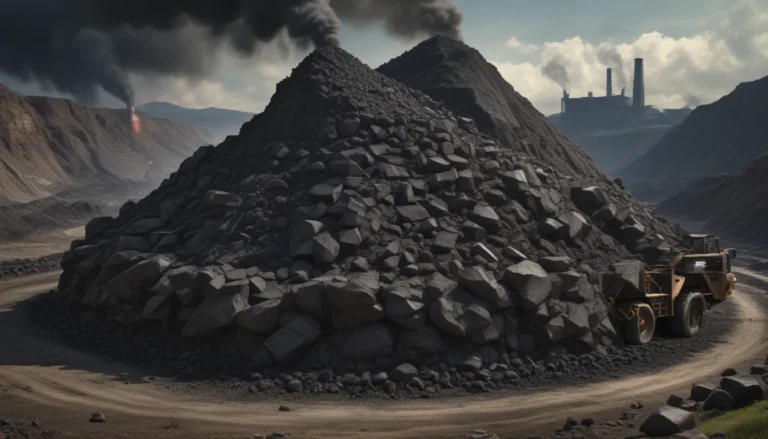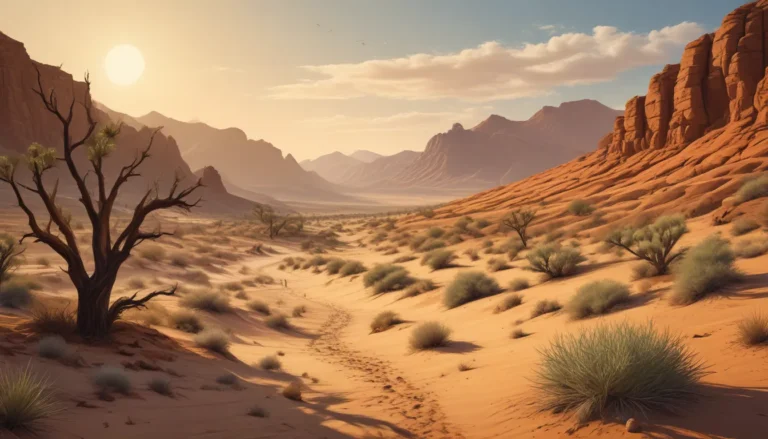A Note About Images: The images used in our articles are for illustration purposes only and may not exactly match the content. They are meant to engage readers, but the text should be relied upon for accurate information.
Are you curious about the awe-inspiring forces of nature that shape our world? Downbursts, often overshadowed by tornadoes and hurricanes, hold a mesmerizing allure with their sudden and potent gusts of wind. In this exploration of downbursts, we will uncover eight astonishing facts that shed light on these captivating weather phenomena. From their formation to their impact on aviation safety, downbursts offer a unique perspective on the raw power of Mother Nature. Let’s embark on a journey to unravel the mysteries of downbursts and deepen our understanding of these extraordinary events.
Delving into the World of Downbursts
Have you ever witnessed the fierce intensity of a downburst? These natural weather occurrences, also known as microbursts, are characterized by abrupt and forceful downward blasts of wind that can wreak havoc in their wake. Emerging from severe thunderstorms, downbursts have the potential to strike anywhere on the globe, making them a truly universal spectacle.
Harnessing the Power of Downbursts
Downbursts showcase their might through astonishing wind speeds that rival even tornadoes. With velocities reaching up to 100 miles per hour or more, these high-speed winds have the capacity to cause extensive damage to structures, trees, and buildings in their path. It’s a testament to the sheer force of nature that downbursts possess.
Unveiling the Duality of Downbursts
Did you know that there are two distinct types of downbursts? Wet downbursts come accompanied by heavy rainfall, while dry downbursts strike without precipitation. Both variations are capable of generating destructive winds, although wet downbursts are more commonly observed in nature.
Witnessing Outflow Boundaries: Nature’s Artistry
One of the remarkable outcomes of a downburst is the creation of outflow boundaries, unique lines of gusty winds that extend horizontally from the origin point of the downburst. These boundaries can stretch for miles, influencing weather conditions along their path and showcasing the intricate interplay of atmospheric forces.
Navigating the Skies Through Downburst Hazards
For pilots, the sudden and potent winds of a downburst pose a significant threat to aviation safety during takeoff and landing. It’s essential for aviators to remain vigilant of downbursts and take appropriate precautions to ensure the security of their flights and passengers.
Unleashing the Torrential Effect of Downbursts
When a downburst converges with heavy rainfall, it has the potential to trigger flash flooding. The intense downpour overwhelms natural drainage systems, leading to swift and hazardous flooding in a condensed timeframe. It’s a stark reminder of the dynamic nature of these atmospheric events.
Embracing Advanced Detection: Doppler Radar’s Role
Meteorologists rely on Doppler radar to detect the presence of downbursts, enabling them to issue timely warnings and assist communities in preparing for potential damage. By leveraging advanced technology, we can enhance our preparedness and response to these formidable weather events.
Fostering Balance in Atmospheric Processes
While downbursts may exhibit destructive tendencies, they play a pivotal role in redistributing heat and moisture in the atmosphere. By maintaining the equilibrium of weather patterns, downbursts contribute to the overall climatic conditions on our planet, highlighting the interconnectedness of Earth’s atmospheric processes.
Conclusion: Embracing the Power of Downbursts
In the realm of natural phenomena, downbursts stand out as extraordinary manifestations of nature’s power. From their awe-inspiring strength to their intricate characteristics, downbursts offer a profound insight into the forces that shape our world. By deepening our understanding of these phenomena, we can better prepare for and respond to their effects, safeguarding communities and fostering resilience in the face of nature’s unpredictability.
FAQs: Exploring Common Queries
-
Q: What causes a downburst?
A: Downbursts are typically triggered by thunderstorms, where a downdraft of cold air rapidly descends from the cloud base and spreads forcefully upon reaching the ground. -
Q: Can downbursts occur in any part of the world?
A: Yes, downbursts are not confined to specific regions and can manifest in various parts of the world where thunderstorms are prevalent. -
Q: Are downbursts dangerous?
A: Absolutely, downbursts pose a significant threat due to their powerful winds that can cause structural damage and hazardous flying debris. Safety precautions should be taken when a downburst is imminent. -
Q: How are downbursts different from tornadoes?
A: While both involve potent winds, downbursts arise from descending cold air, whereas tornadoes are characterized by rotating columns of air with a more concentrated path of destruction. -
Q: Can downbursts be predicted?
A: Forecasting downbursts can be challenging, but meteorologists utilize advanced tools to monitor atmospheric conditions and issue timely warnings to the public.
Let’s continue to embrace the marvels of nature and deepen our understanding of the world around us. Through education and awareness, we can navigate the complexities of downbursts and harness our collective knowledge to adapt and thrive in the face of nature’s majestic power.






